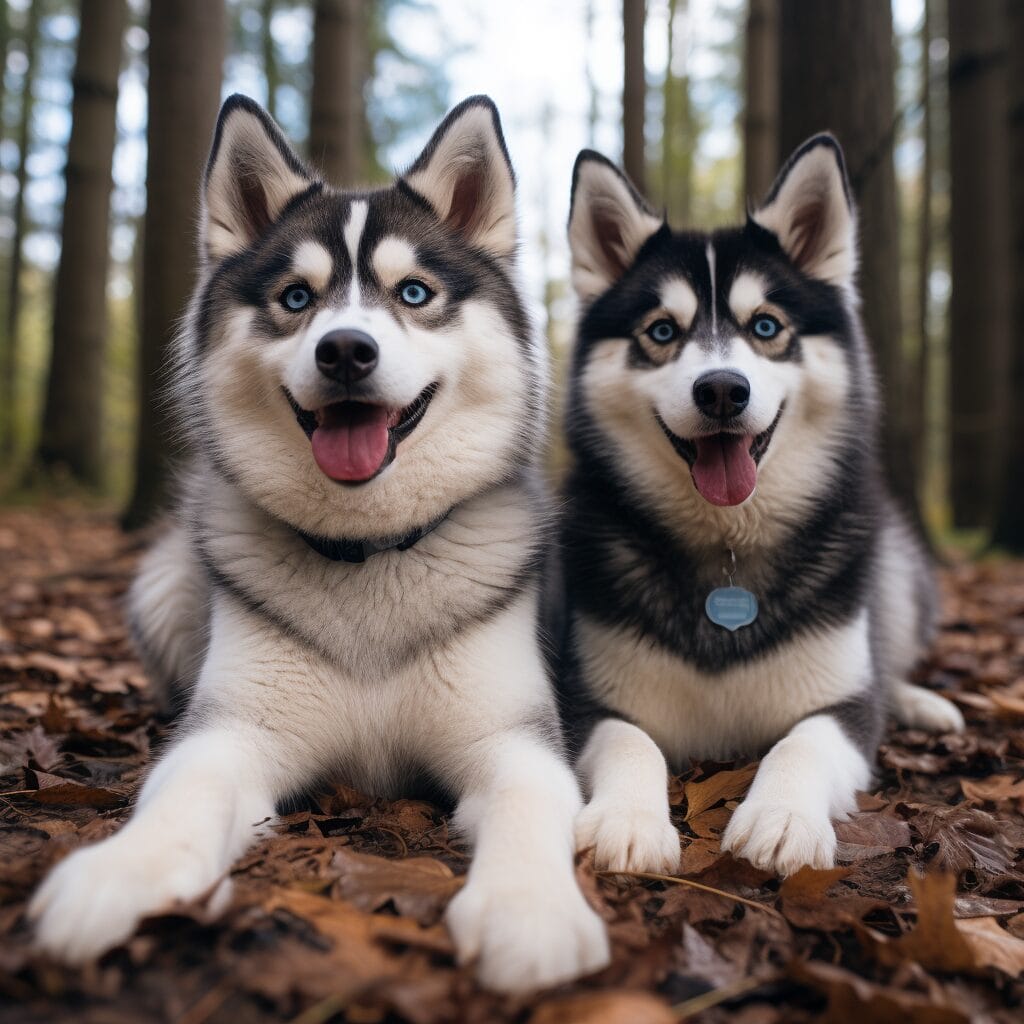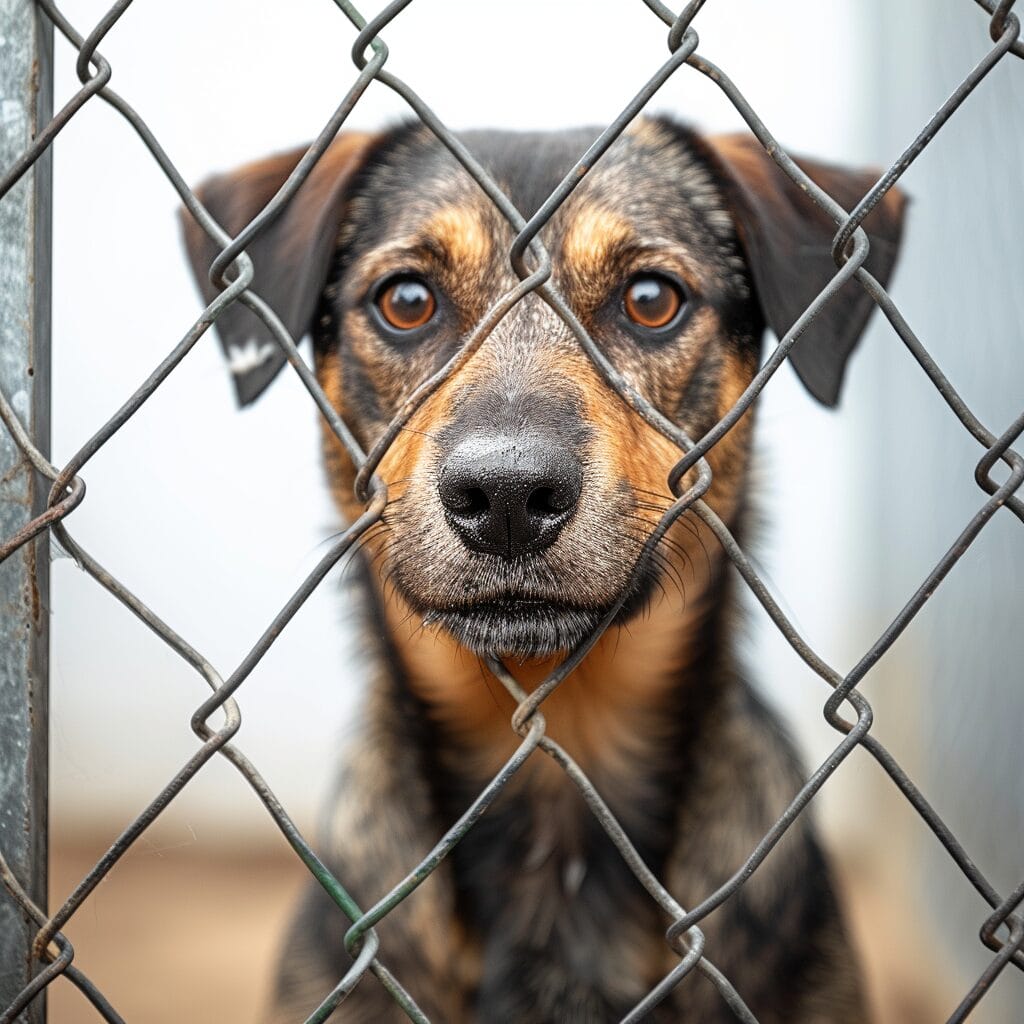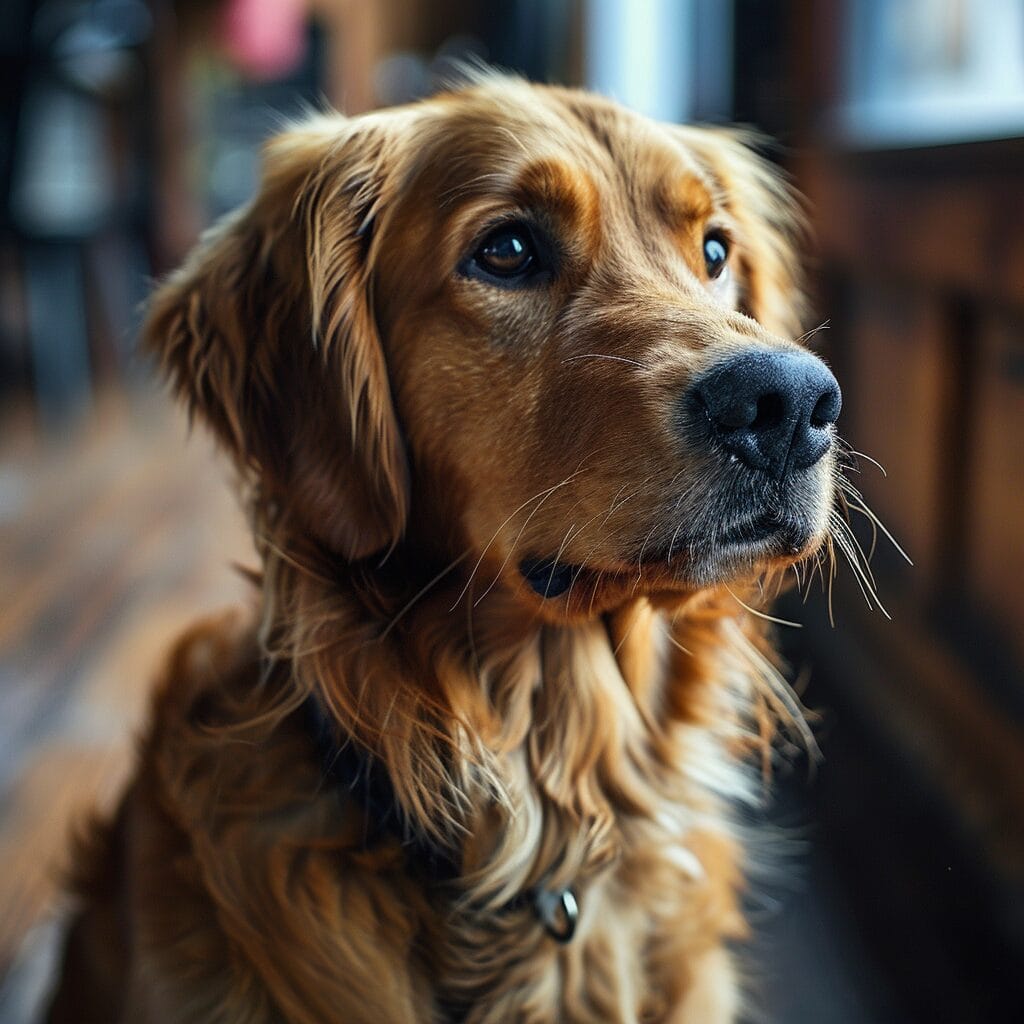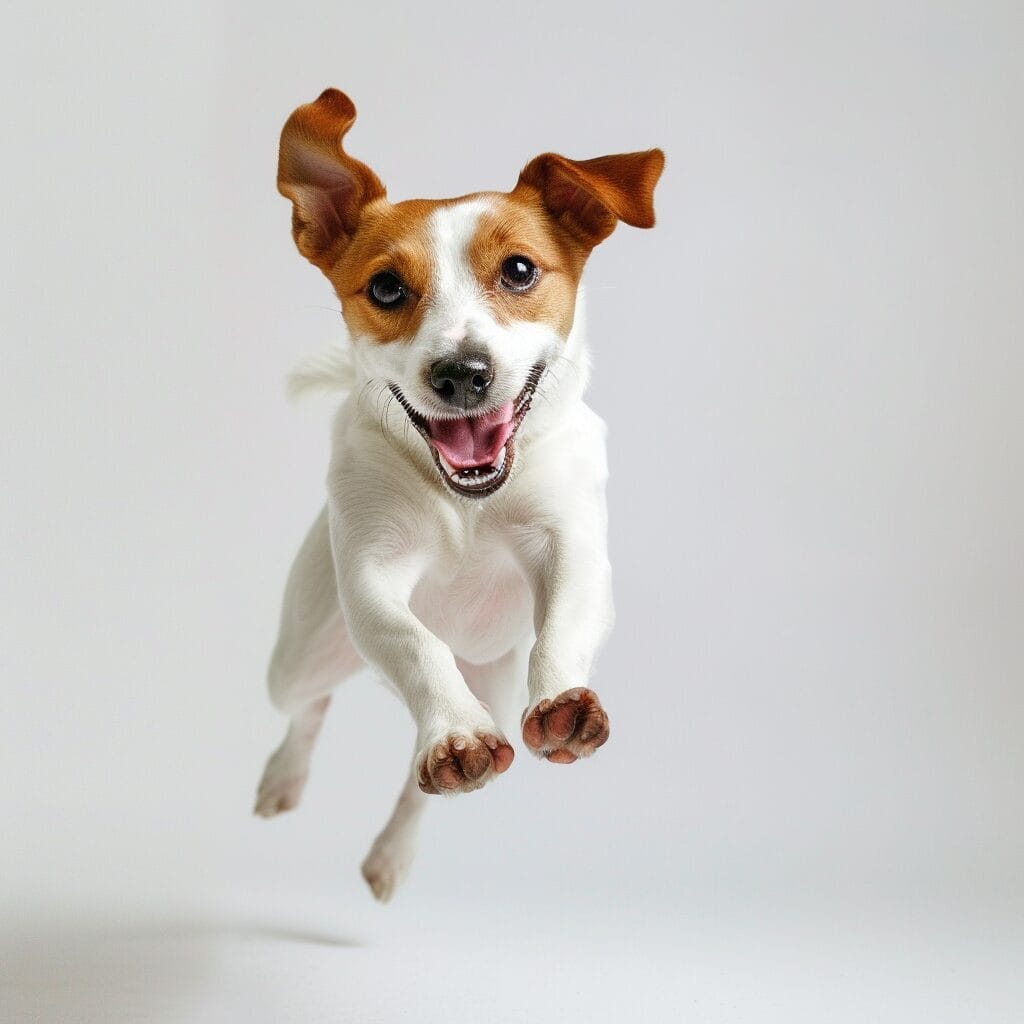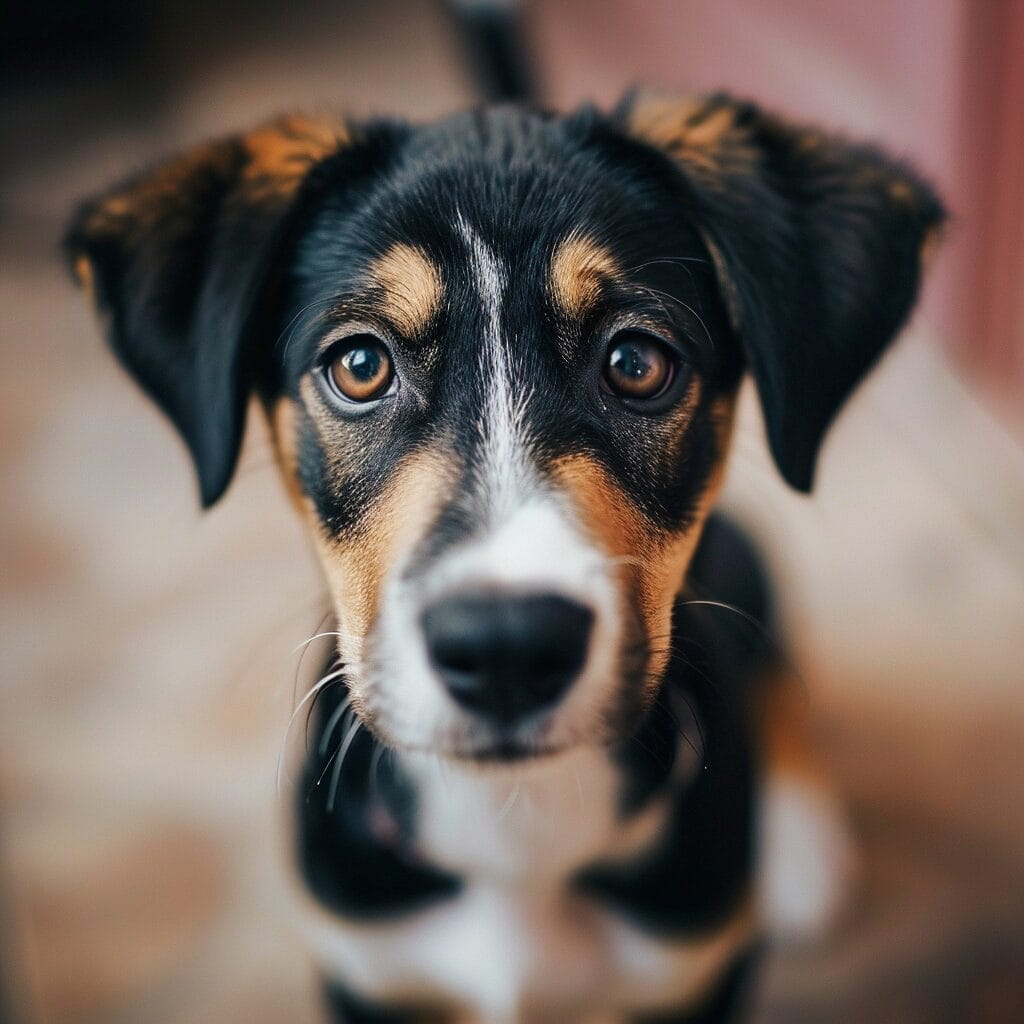Did you know that the Alaskan Klee Kai and Pomsky, purebred dogs, are among the most sought-after dog breeds today, with a rising trend in popularity? These pint-sized pups may look similar at first glance, but there are key differences between them that potential pet parents should consider before making a choice.
From their size and appearance to their temperament and grooming needs, each breed brings its own unique characteristics to the table. Whether you’re drawn to the striking looks of the Pomsky or the spirited nature of the Alaskan Klee Kai, understanding these distinctions is crucial for selecting the perfect furry companion for your lifestyle.
Alaskan Klee Kai vs Pomsky
Key Takeaways
- Consider Size Differences: Alaskan Klee Kai are generally smaller than Pomskies, so assess your space and lifestyle before choosing a breed.
- Understand Temperament Variances: Alaskan Klee Kai tend to be reserved while Pomskies are more outgoing, so match the temperament to your preferences.
- Tailor Exercise and Training: Pomskies may need more exercise and training compared to Alaskan Klee Kai, so adjust routines accordingly.
- Prioritize Health Awareness: Both breeds have specific health considerations, so regular vet check-ups and preventive care are crucial.
- Acknowledge Lifespan Variations: Pomskies typically have a shorter lifespan than Alaskan Klee Kai, factor this into long-term pet planning.
- Choose Based on Lifestyle: Depending on your activity level and living situation, decide whether the Alaskan Klee Kai or Pomsky is a better fit for your family.
Overview of Alaskan Klee Kai and Pomsky
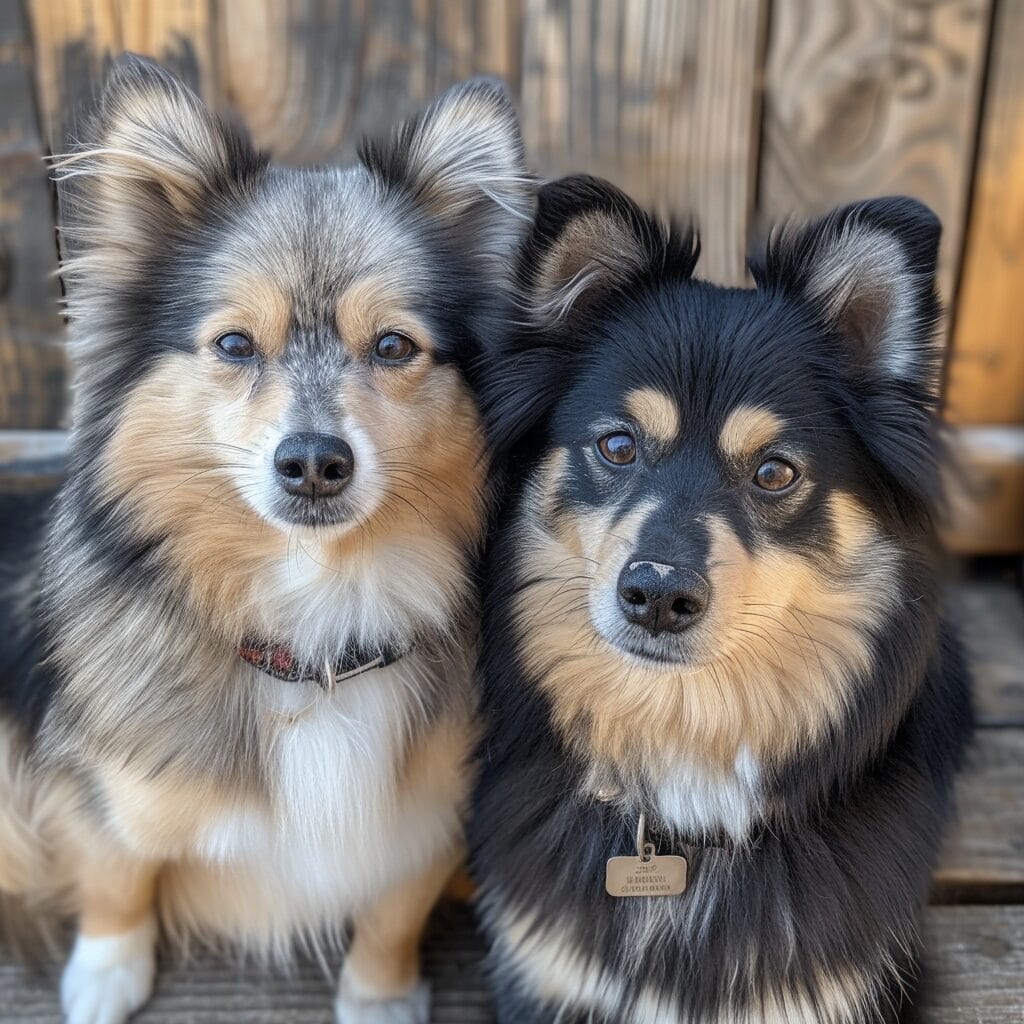
Origin and History
Alaskan Klee Kai: Bred in the 1970s in Alaska by Linda Spurlin, these dogs were developed from Siberian Huskies. They were meant to be a smaller version of the Husky.
Pros:
- Known for their intelligence and agility.
Cons:
- Can be reserved around strangers.
Pomsky: A newer breed, they are a mix between a Pomeranian and a Siberian Husky. The first litter was born in 2012.
Pros:
- Playful and energetic companions.
Cons:
- May inherit health issues from both parent breeds.
Both breeds have gained popularity due to their adorable looks and unique characteristics.
Physical Characteristics
The Alaskan Klee Kai, ranging from toy to standard sizes, typically weigh between 10 to 20 pounds depending on the size variety.
- Their coat comes in various colors like black, white, gray, or red with striking facial masks resembling those of Huskies.
- Known for their expressive eyes that can be blue or brown.
Conversely, the Pomsky is generally smaller than the Alaskan Klee Kai but larger than a Pomeranian:
- They often have fluffy double coats that require regular grooming due to shedding tendencies.
- Pomskies usually come in diverse coat colors such as white, black, brown, cream or grey.
In terms of physical appearance alone, distinguishing between an Alaskan Klee Kai and a Pomsky can sometimes prove challenging due to certain similarities despite their differences in size.
Popularity and Recognition
When it comes to recognition by major kennel clubs:
- The Alaskan Klee Kai is recognized by fewer organizations compared to more established breeds like Labradors or German Shepherds but has been acknowledged by some clubs recently.
- On the other hand,the Pomsky remains unrecognized by large kennel clubs, mainly because it’s considered a designer breed rather than an established one like its parent breeds.
Despite this lack of formal recognition, Pomskies have surged in popularity over recent years thanks largely to social media platforms where numerous accounts feature these charming dogs.
Size Comparison of Alaskan Klee Kai and Pomsky

Height and Weight Ranges
Alaskan Klee Kai typically weigh between 10-20 pounds, with a height range of 13-17 inches. On the other hand, Pomskies can weigh around 20-30 pounds, standing at a height of 10-15 inches. The Alaskan Klee Kai are generally smaller in size compared to Pomskies.
Both breeds have distinctive size variations that can impact their suitability for different living spaces. For instance, if you live in an apartment with limited space, the smaller size of the Alaskan Klee Kai might be more suitable than a larger Pomsky.
Considerations for Living Spaces
When considering which breed is best suited for your living space based on their sizes, it’s essential to evaluate factors such as exercise needs and indoor activities. Alaskan Klee Kai, being smaller in size, may require less physical activity indoors than Pomskies due to their compact build.
Moreover, if you have a spacious backyard or live in a house with ample room for your dog to roam freely and play outdoors extensively, a larger breed like the Pomsky might be better suited. However, keep in mind that both breeds need regular exercise regardless of their size differences.
Pros and Cons:
Alaskan Klee Kai:
Pros:
- Suitable for small living spaces; easier to handle due to smaller size.
Cons:
- May require more outdoor exercise; may not be ideal for individuals seeking larger dogs.
Pomsky:
Pros:
- Energetic and playful; great companionship.
Cons:
- Need ample space for activities; may not fit well into small apartments.
Color Differences Between Alaskan Klee Kai and Pomsky
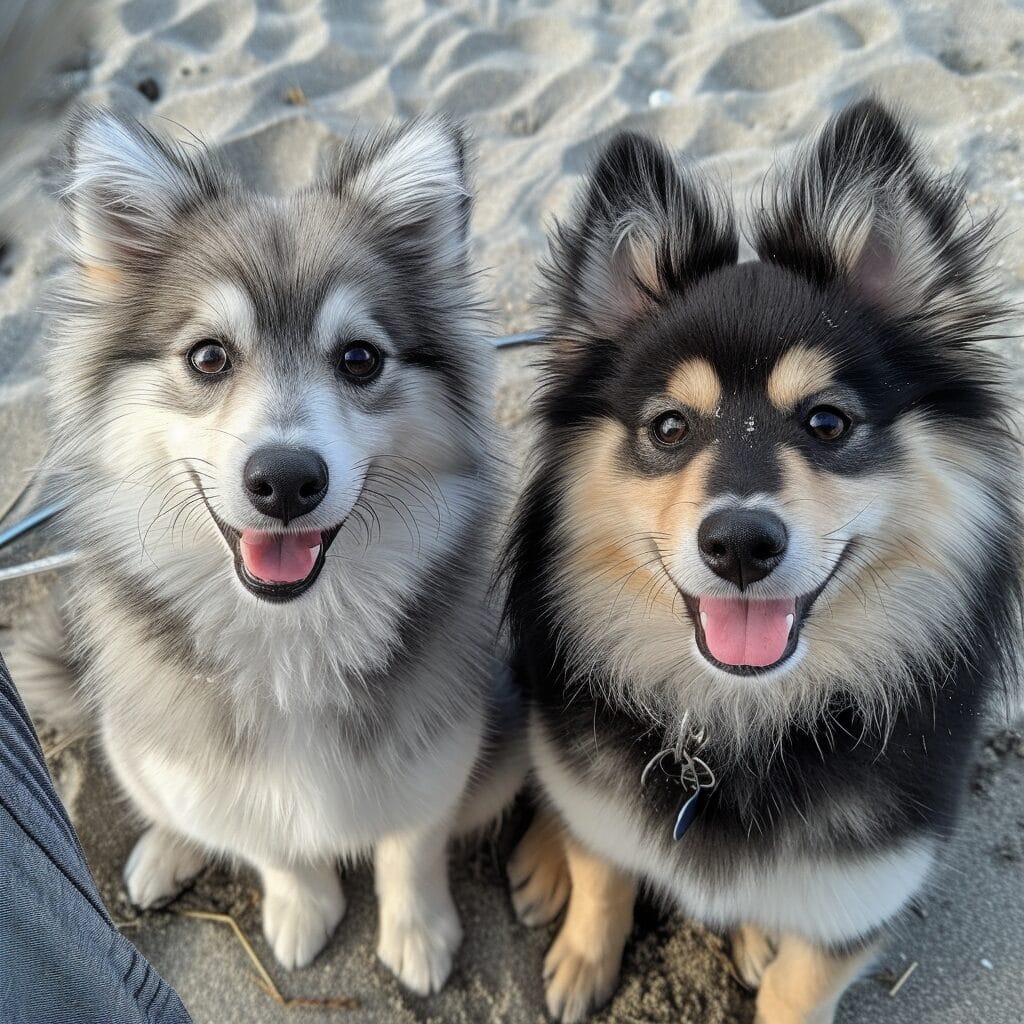
Common Coat Colors
Alaskan Klee Kai and Pomskies both come in various colors. Alaskan Klee Kai commonly have coat colors like black, white, gray, red, or combinations of these hues. On the other hand, Pomskies often exhibit colors such as black, white, brown, cream, or a mix of these shades.
Both breeds can also have unique color patterns that set them apart from each other. For instance:
- Alaskan Klee Kai: They may feature striking facial masks with contrasting eye colors.
- Pomsky: These dogs might showcase a blend of their Husky and Pomeranian heritage through their fur color variations.
Factors Influencing Coat Colors
The coat color variations in Alaskan Klee Kai and Pomskies are influenced by several factors. One significant factor is genetics the genes inherited from their parent breeds determine the potential color possibilities for each puppy. Additionally:
- Genetic Makeup: The combination of genes passed down from Alaskan Klee Kai and Siberian Husky parents contributes to the diverse coat colors seen in Pomskies.
- Breed Standards: Each breed has specific standards that outline acceptable coat colors; breeders aim to adhere to these standards when producing litters.
Another critical aspect influencing coat colors is selective breeding practices employed by responsible breeders. By selectively pairing dogs with desired traits over generations, breeders can enhance certain characteristics like specific colors or patterns in future litters.
Temperament of Alaskan Klee Kai vs Pomsky
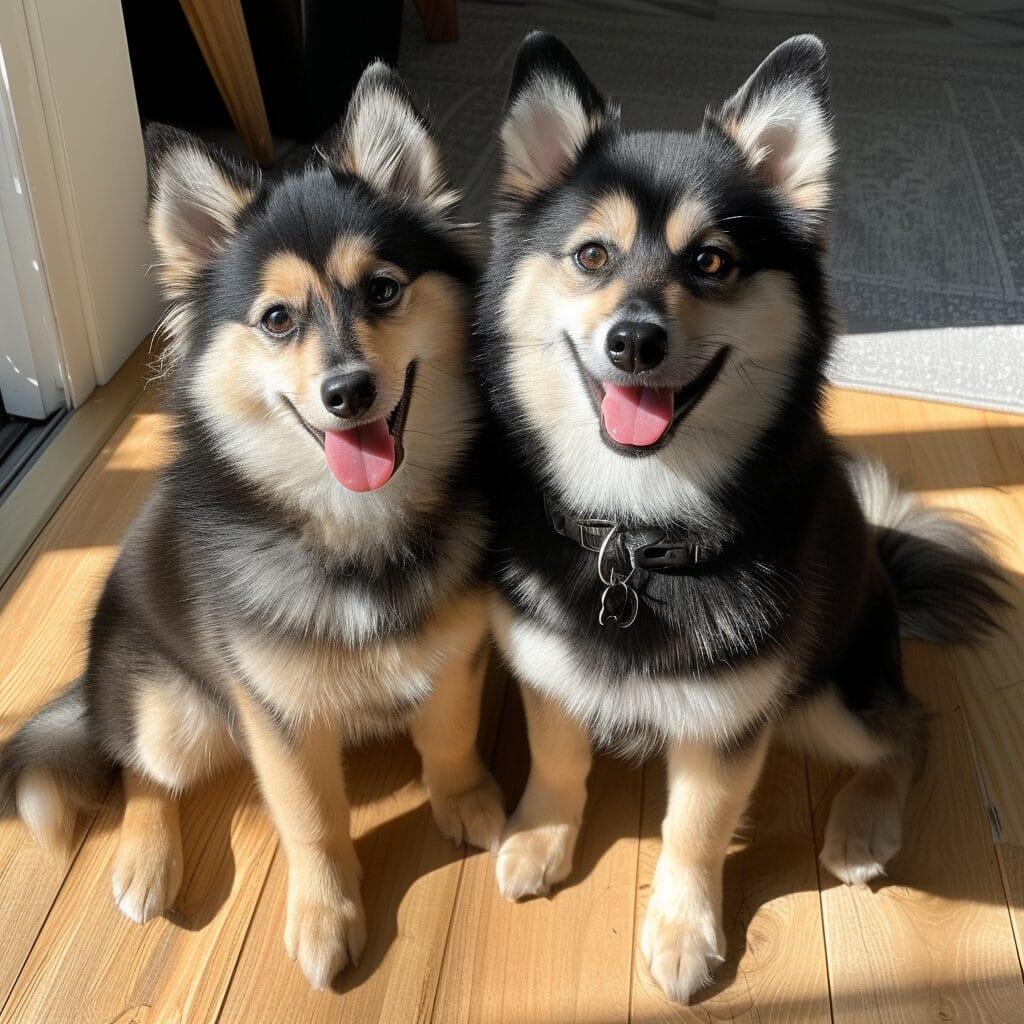
Alaskan Klee Kai Traits
Alaskan Klee Kais are known for their loyalty and affectionate nature, making them excellent companions. These dogs are often described as intelligent, curious, and energetic. They have a tendency to be reserved around strangers but form strong bonds with their families. Alertness is another key trait in the breed; they make great watchdogs due to their keen senses.
Alaskan Klee Kais can be independent at times, which may require patience during training sessions. Their high energy levels mean they need regular exercise and mental stimulation to prevent boredom-related behaviors. However, their playful demeanor makes them enjoyable pets for active families looking for a lively companion.
Pomsky Characteristics
Pomskies inherit characteristics from both parent breeds Pomeranians and Siberian Huskies. These designer dogs are known for being playful, social, and sometimes even a bit mischievous. They thrive on human interaction and enjoy being part of family activities. Pomskies tend to be vocal, often expressing themselves through barks or howls.
Due to their intelligence, Pomskies need mental challenges to keep them engaged; otherwise, they might resort to destructive behavior out of boredom. While these dogs are generally friendly towards people of all ages, early socialization is crucial in preventing any potential behavioral issues.
Family Compatibility
When it comes to choosing between an Alaskan Klee Kai and a Pomsky based on temperament differences for family compatibility:
- Alaskan Klee Kai’s loyalty makes them great family pets that bond closely with all members.
- The playful nature of the Pomsky can bring joy and entertainment into households with children.
- Families seeking more outgoing watchdogs might lean towards the alertness of the Alaskan Klee Kai.
- Those valuing vocal communication could appreciate the expressive tendencies found in the Pomsky.
Behavioral Contrasts Between Pomsky and Alaskan Klee Kai

Energy Levels
Alaskan Klee Kai are known for their high energy levels, needing regular exercise to stay happy. On the other hand, Pomskies also have a good amount of energy but tend to be slightly more laid-back compared to the Alaskan Klee Kai. This means that while both breeds need daily walks and playtime, the Alaskan Klee Kai might require a bit more activity to keep them satisfied.
- Alaskan Klee Kai: High energy levels, needs regular exercise.
- Pomsky: Good amount of energy, slightly more laid-back than Alaskan Klee Kai.
Social Tendencies
. They are often friendly and outgoing in various social settings. Conversely, Alaskan Klee Kai can be reserved with strangers and may take time to warm up. They might not always exhibit as much enthusiasm when meeting new people or animals compared to Pomskies.
- Pomsky: Enjoy being around people and other pets.
- Alaskan Klee Kai: Reserved with strangers, may take time to warm up.
Trainability Distinctions
In terms of trainability distinctions between these two breeds, both the Pomsky and the Alaskan Klee Kai are intelligent dogs that can learn commands quickly with consistent training efforts. However, some owners note that Pomskies can sometimes display a stubborn streak which could make training challenging at times. On the contrary,** Alaskan Klee Kai**, although intelligent like Pomskies, tend to respond well to positive reinforcement techniques during training sessions.
- Key Points:
Both breeds are intelligent but may differ in response during training.
Examples:
- A Pomsky might require extra patience during obedience training due to its occasional stubbornness.
- An Alaskan Klee Kai could excel in agility exercises when motivated positively by treats or praise.
Exercise and Training Needs for Both Breeds

Exercise Requirements
Both Alaskan Klee Kai and Pomsky have high exercise requirements to maintain their health. These breeds are energetic and need regular physical activity to prevent obesity and promote overall well-being. Daily walks, playtime, and engaging activities are essential for keeping these dogs happy.
Regular exercise also helps in preventing behavioral issues that might arise from pent-up energy. Providing outlets for physical exertion is crucial in ensuring that both Alaskan Klee Kai and Pomskies remain mentally stimulated, content, and well-behaved.
Training Methods
. They respond well to positive reinforcement techniques such as treats or praise. Consistency is key when training this breed due to their intelligence levels.
On the other hand, Pomskies, a crossbreed between a Pomeranian and a Siberian Husky, inherit traits from both parent breeds. This can result in a dog that is intelligent yet may exhibit stubbornness at times during training sessions. Utilizing rewards-based training coupled with patience can help in effectively teaching commands to Pomskies.
Mental Stimulation Importance
Mental stimulation plays a vital role in preventing behavioral issues among both Alaskan Klee Kai and Pomskies. These breeds require mental challenges alongside physical exercise to keep them engaged and prevent boredom-induced behaviors like excessive barking or destructive tendencies.
Providing interactive toys, puzzle games, obedience training sessions, or even agility courses can help fulfill the mental stimulation needs of these intelligent breeds. Engaging their minds through various activities not only prevents behavior problems but also strengthens the bond between the dog and its owner.
Health Considerations for Alaskan Klee Kai and Pomsky

Common Health Issues
Alaskan Klee Kai and Pomskies are prone to specific health concerns that owners should be aware of. Both breeds may inherit genetic predispositions that lead to certain health problems. For example, Alaskan Klee Kai are known to suffer from luxating patellas, a condition where the kneecap dislocates easily. On the other hand, Pomskies commonly face issues like hip dysplasia, which can cause discomfort and mobility issues.
These common health problems highlight the importance of regular veterinary check-ups for early detection and treatment. By monitoring your dog’s health regularly, you can address any emerging issues promptly before they escalate into more serious conditions.
Preventive Care
Routine visits to the vet are crucial for maintaining your Alaskan Klee Kai or Pomsky’s well-being. These check-ups allow veterinarians to assess your dog’s overall health status and catch any potential health concerns early on. Vaccinations, parasite control, dental care, and nutrition guidance are all aspects of preventive care that play a significant role in keeping your furry friend healthy.
In addition to veterinary visits, providing a balanced diet tailored to your dog’s needs is essential for their long-term health. Regular exercise also contributes positively to their physical fitness and mental well-being by preventing obesity-related health issues, improving cardiovascular health, and promoting joint strength.
Lifespan Variations Between Pomsky and Klee Kai

Lifespan Expectancy
Alaskan Klee Kai generally lives longer than Pomskies. On average, Alaskan Klee Kai have a lifespan of 12-16 years, while Pomskies typically live around 12-14 years. The Alaskan Klee Kai’s longer life expectancy can be attributed to their smaller size compared to the Pomsky.
In contrast, factors like genetics, diet, exercise, and healthcare play crucial roles in determining the longevity of both breeds. Regular vet check-ups and vaccinations are essential for maintaining overall health in both Alaskan Klee Kai and Pomskies. Providing a balanced diet suitable for their breed size is also vital for promoting a healthy life.
Influencing Factors
Genetic predispositions can impact the lifespan of Alaskan Klee Kai and Pomskies alike. For instance, patellar luxation is a common issue in small dog breeds like these two. This condition affects the kneecap joint’s stability and can lead to discomfort or lameness if not addressed promptly through veterinary care.
Obesity significantly shortens dogs’ lives by increasing the risk of various health issues such as diabetes or joint problems due to added pressure on bones and joints. Regular exercise tailored to each breed’s needs helps maintain optimal weight levels which contribute positively to their quality of life.
Suitability as Pets for Alaskan Klee Kai vs Pomsky
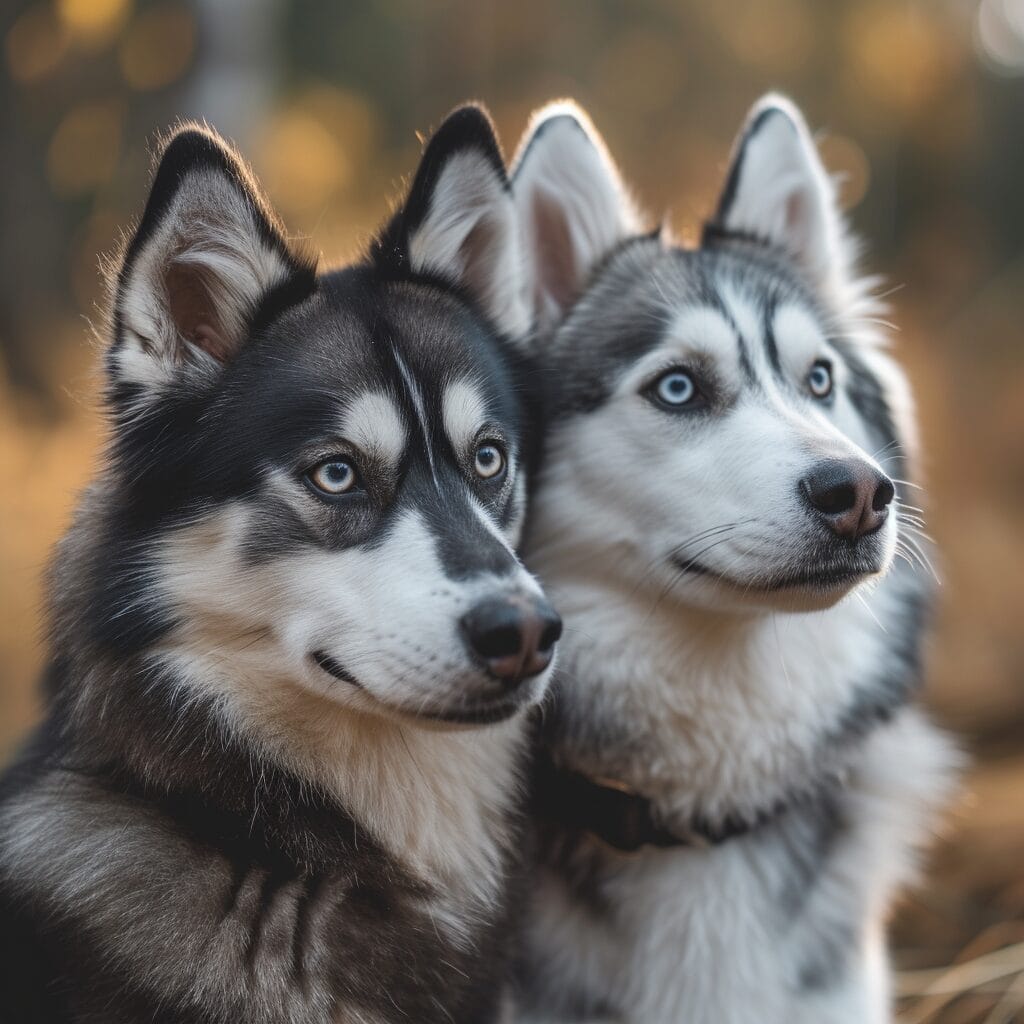
Living Environments
Alaskan Klee Kai thrive in both apartments and houses, but they require regular exercise. On the other hand, Pomskies can adapt well to apartment living if given enough exercise. Both breeds enjoy outdoor activities like walks or playtime in a secure yard.
Alaskan Klee Kai are known to be good with kids when socialized early. Similarly, Pomskies can be affectionate towards children if raised together from a young age. However, supervision is crucial during interactions between small children and these small breeds.
Compatibility with Other Pets
Alaskan Klee Kai have a strong prey drive due to their Husky heritage, so they may not be the best match for households with smaller pets like rabbits or hamsters. Conversely, Pomskies tend to get along well with other dogs and cats if introduced properly and trained accordingly.
Grooming plays a significant role in pet ownership decisions for both breeds. Alaskan Klee Kai have a thick double coat that sheds seasonally and requires regular brushing to minimize shedding around the house. In contrast, Pomskies have a dense double coat that needs frequent grooming sessions to prevent matting and maintain their fluffy appearance.
Closing Thoughts
You’ve now got the lowdown on Alaskan Klee Kai and Pomsky breeds. From size and colors to temperament, exercise needs, and health considerations, you’re equipped to make an informed decision. Remember, each pup has its own quirks and needs, so choose wisely based on your lifestyle and what you can offer.
Now that you’re clued in, go fetch your perfect furry match! Whether you opt for the petite but spirited Alaskan Klee Kai or the fluffy and charming Pomsky, make sure you’re ready for a lifetime of tail wags and puppy kisses. Your new best friend is out there waiting for you to take the lead!
Frequently Asked Questions
What are the main differences between Alaskan Klee Kai and Pomsky breeds?
Alaskan Klee Kai is known for their reserved nature, while Pomskies tend to be more outgoing. Alaskan Klee Kai are smaller in size compared to Pomskies.
Are Alaskan Klee Kai and Pomsky suitable for first-time dog owners?
Both breeds can be good choices for first-time dog owners with proper training and socialization. However, Pomskies may require a bit more attention due to their energetic nature.
How do the exercise needs differ between Alaskan Klee Kai and Pomsky?
Alaskan Klee Kai typically need moderate exercise, while Pomskies are more active and require regular physical activity to keep them mentally stimulated and healthy.
Which breed has a longer lifespan – Alaskan Klee Kai or Pomsky?
On average, Alaskan Klee Kai have a longer lifespan of around 12-16 years, whereas Pomskies usually live between 10-14 years. Proper care such as regular vet check-ups can help extend their lifespans.
Do Alaskan Klee Kai and Pomsky dogs shed a lot?
Both breeds shed moderately throughout the year. Regular grooming sessions like brushing can help manage shedding. Consider your tolerance for pet hair when choosing between these two adorable but furry companions!

